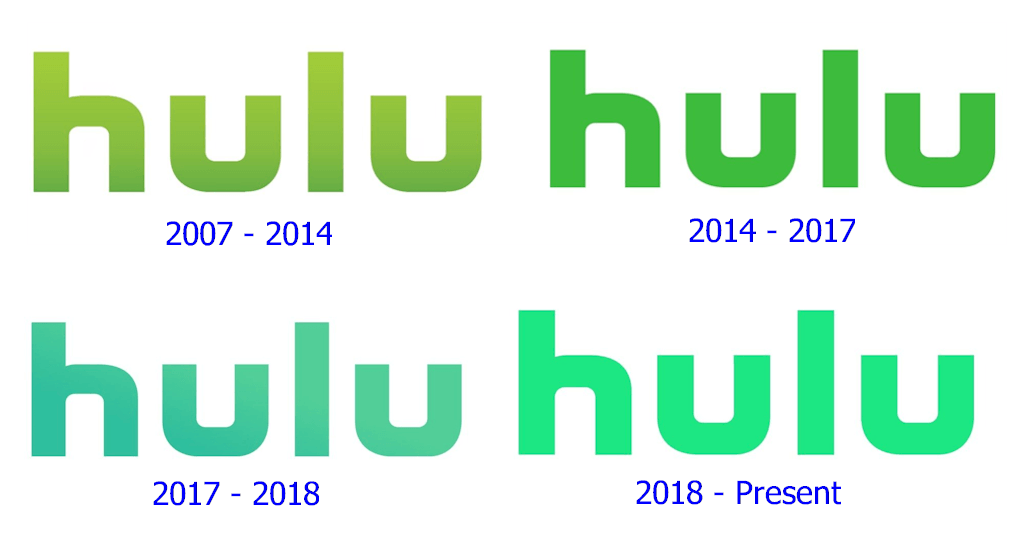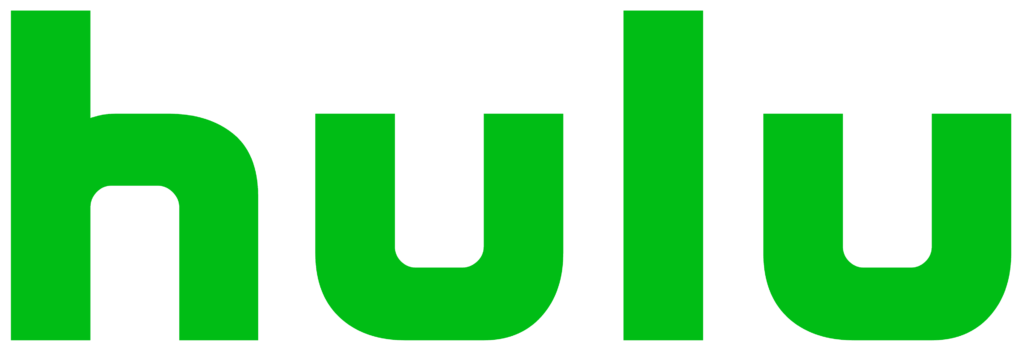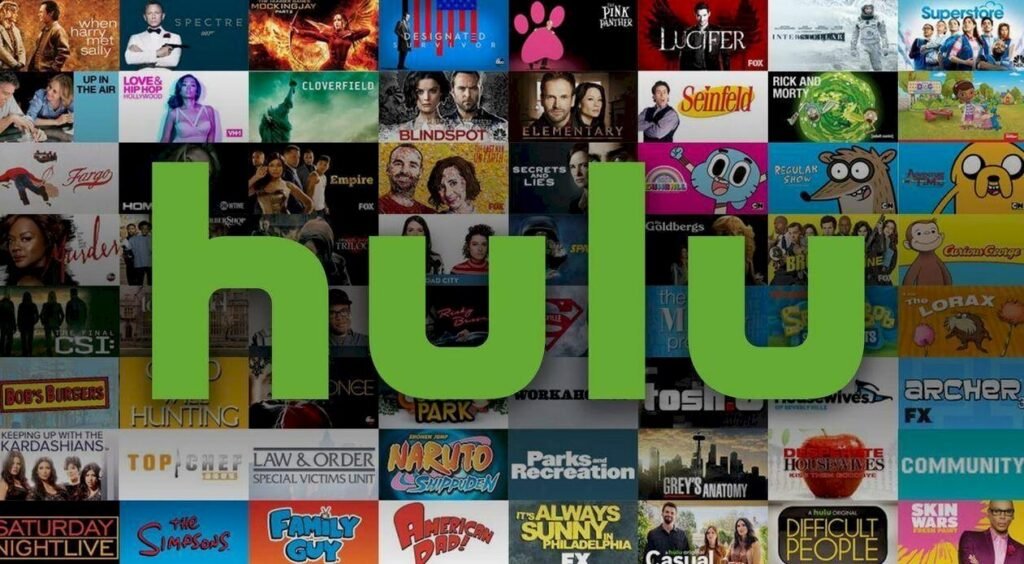The Hulu logo consists of a green “Hulu” wordmark. The designers thought that this wordmark was good enough to grab the attention of users and make the video streaming service stand out from the rest of its competitors.
The brand name “Hulu” was inspired by an ancient Chinese proverb that alludes to someone who amasses jewelry. The direct translation of Hulu is a pumpkin because the Chinese used to store jewelry in pumpkin containers in the olden days.
The current Hulu logo was designed by London-based graphic design studio DixonBaxi. With more than 43.8 million subscribers worldwide as of the 4th quarter of 2021, the streaming platform has grown massively over the last few years.
The Hulu Logo Evolution

The Hulu logo has remained almost the same since it was first designed. It has undergone three significant designs but has retained the color scheme and shape of the original visual identity, introduced in 2007. Nevertheless, the logo has given the streaming platform a new solid and stylish appearance.
2007 – 2014
The original Hulu logo consisted of a stylized lowercase wordmark in a bespoke geometric sans serif font, which was rendered in a delicate gradient green against a white backdrop. The letters had a lighter shade of green on top and a darker green shade at the bottom, looking a bit dramatic. The original version was in use for the first seven years of Hulu’s existence.
2014 – 2017
The first redesign of the Hulu logo in 2014 retained the style and shape of the wordmark but changed its color scheme. A new green shade was used with no gradients, making the visual identity flat but vivid and bright. The grass-green tone reflects Hulu’s growth and development, portraying its energy and progress.
2017 – 2018
After 10% of Hulu was acquired by WarnerMedia in 2016, the Hulu logo was changed again slightly. The change was done only to the color scheme, which restored delicate green gradient shades and changed the main shade to turquoise-green, representing imagination and creativity and giving the image a relaxing, chilling mood.
2018-Present
The Hulu logo was redesigned for the third time in 2018, introducing a new green shade without gradient shades. The brightened and lightened color made the wordmark look more stylish yet modern and vivid. The bright green letters look friendly, funny, and progressive, bringing an inviting and welcoming feeling to mind.
The Hulu Logo Design Elements

The key element of any video streaming platform’s visual identity is its brand name, so the Hulu logo designers went for a text design. Using the basic tenets of typography, the designers made the wordmark bright and memorable. Since the logo features no graphic element, all attention is directed towards the word “Hulu.”
Color: All versions of the Hulu wordmark logo are presented in almost the same color scheme. They first used pronounced green shades like American Green, but a lighter green shade is now preferred, known as Hulu green. The traditional gradient was done away with—it only featured on the first (2007-2014) and third (2017-2018) logo versions.
Green is a widely known symbol of growth and success. However, it also stands for harmony and dynamism, which the streaming platform puts into its video content to provide subscribers with the best possible experience in the world.
The bright green shade of the present Hulu logo also represents the company’s progressiveness and capacity to adapt to its customer’s wants and needs.
Font: The Hulu logo is made up of strong lowercase letters executed in a sans serif typeface. The typeface vaguely looks like the business apt Futura Md BT. In the current logo version, the printed letters have an austere geometric shape.
The History of Hulu
Hulu was established in 2007 by Bruce Campbell, JB Perrette, Peter Chermin, Beth Cornstock, Mike Lang, Jason Kilar, Darren Feher, and George Kliavkoff. Hulu was publicized a year earlier in March, with NBCUniversal, AOL, MSN, Facebook, Yahoo!, and MySpace earmarked as its first distribution partners. In late 2007, Jason Kilar was appointed Hulu CEO.
Once the website went live in August 2007, the brand name Hulu was picked, with just an announcement and zero content. It invited people to join the forthcoming beta test. Hulu started private beta testing in October 2007 and later permitted users to invite their friends. In March 2008, the company allowed residents of the United States to access the platform.
Hulu launched the Hulu Syndication network as its first product in late October 2007. The product was the creation of New York’s NBC Universal team. This was followed by the launch of Hulu.com destinations website shortly afterwards.
Hulu’s Early Years

Hulu started an ad campaign during the airing of Super Bowl XLIII by NBC, with the initial advertisement starring Alec Baldwin, alias “Alec in Huluwood.” Many Hulu ads have since aired, starring Eliza Dushku, Denis Leary, Will Arnett, and Seth MacFarlane.
In July 2007, Newport Television’s Providence Equity Partners was one of the first external investors in Hulu, purchasing a 10% stake in the firm for $100 million. With this investment, Providence Equity Partners earned a slot in the Hulu board of directors, where it acted as an “independent operator on the board.” Disney became a member of the Hulu Conglomerate as a shareholder in April 2009, intending to provide content from both the Disney Channel and ABC.
In early 2010, Hulu CEO Jason Kilar revealed that the streaming platform had turned in a profit in the last two quarters and expected to earn revenue of more than $100 million by mid-2010, more than the company’s income for the entirety of 2009. According to ComScore, monthly video streams hit 903 million in early 2010, more than thrice the figure for 2009, and second to YouTube only.
In August 2010, it was announced that Hulu had plans to start an IPO, which was expected to value the streaming service at over $2 billion.
According to a Wall Street Journal report in June 2011, an “unsolicited offer” made Hulu “reconsider plans to sell its stake.” But in October 2011, Hulu’s owners made it clear that they wouldn’t sell the company because they hadn’t received a satisfactory offer from any of the bidders.
In 2011, Hulu earned $420 million in revenue, missing its target by $80 million. On the 17th of October 2013, the vacant Hulu CEO position was formally filled by Mike Hopkins, who had previously served as Fox Networks President.
Providence Equity Partners sold its 10% stake in the Hulu consortium to Hulu’s owners in October 2012, relinquishing its seat on the board.
In August 2016, Time Warner bought a 10% stake in Hulu. In April 2019, AT&T Inc. sold its 9.5% shareholding of Hulu back to Hulu owners for $1.43 billion so as to focus on its own streaming service, HBO Max.
Mike Hopkins left and was appointed the Chairman of Sony Pictures TV. On the 24th of October 2017, Fox Networks Group Chief Operating Officer Randy Freer was appointed Hulu CEO.
Disney Majority Stake
In March 2019, 20th Century Fox was acquired by Disney, giving Disney a 60% majority shareholding in Hulu. The following month, AT&T sold its almost 10% stake back to Hulu. The only other stakeholder, Comcast, announced in May 2019 that it’d agreed to hand over control to Disney, agreeing to a deal that would allow Disney to buy its 33% shareholding in Hulu by 2024.
After Comcast handed over its Hulu control to Disney, Hulu became a Walt Disney Direct-to-Consumer and International (DTCI) division, reducing Comcast to a silent partner in the process.
Immediately following the agreement, Disney boss Bob Iger said that Hulu’s direct integration with Disney would allow more investment in fresh content, which would consequently allow Disney to make Hulu “even more exciting and provide consumers with a great value for their money.”
Disney explained that being in control of Hulu was the company’s third major part of its direct-to-customer strategy, adding to its sports streaming platform ESPN+ as well as its then-upcoming Disney+ channel. Hulu would focus on “general” entertainment, with its content targeted at mature audiences.
In addition, NBCUniversal would keep licensing its content to Hulu through 2024 at the earliest, but it would have the choice to start turning its exclusivity agreements with Hulu into non-exclusive terms starting in 2020, as well as to halt other content agreements starting in 2022.
In July 2019, Hulu’s reporting structure was reorganized by Disney, putting Hulu’s Scripted Originals staff under the control of Walt Disney TV. Under the reorganized structure, Hulu’s senior Vice-President of Scripted Originals would directly report to the chair of ABC Entertainment and Disney Television Studios.
Fox Searchlight and FX were tasked with supplying Hulu with content in November 2019. Disney got rid of the Hulu CEO position in January 2020, with its top management staff reporting directly to Walt Disney Television and DTCI. At the end of January the same year, Freer quit as Hulu CEO, and the role was scrapped entirely.
In June 2021, Comcast reportedly accused Disney of hindering Hulu’s growth and value by not expanding the service internationally, having instead launched the separate Star brand as a Disney+ extension in specific markets. A couple of months later, Disney’s new CEO Bob Chapek hinted that Disney+, ESPN+, and Hulu could be merged the same way in the future, saying that the current bundle package of these services had a smaller churn rate than the separate services.
In August 2021, Disney announced plans to shut down the American Hotstar version in late 2022. Hotstar is a niche streaming platform targeting Indian Americans. As a result, Hotstar’s original entertainment would be moved to Hulu. Also, Hulu subscribers have been able to access Star India Networks content since August 2021.
In September 2021, Hulu increased the prices of its major ad-free and video-on-demand services by a dollar each to $6.99 as well as $12.99 a month starting on October 8th. Kelly Campbell resigned as Hulu president the same month, and he was subsequently named president of Peacock, NBCUniversal’s rival service.
In Comcast’s third-quarter revenue report, CFO Mike Cavanagh said that Comcast was happy to be associated with the Hulu brand and predicted that the company will stick with Hulu to the hilt since Hulu’s value is projected to keep rising.
In November 2021, WarnerMedia and Disney reached an agreement to allow select Searchlight Pictures and 20th Century Studios movies to stream on Hulu, HBO Max, and Disney+ in 2022. The very same day, a Wall Street Journal report revealed that Comcast was planning to pull some of its Hulu content to boost its Peacock streaming platform.
Summing Up the History of Hulu
Hulu is a US online video streaming service. Launched in late October 2007, it provides a collection of television series and movies from networks like ABC, CBS, FX, and NBC, as well as original content made by the service itself. The Walt Disney Company owns a majority stake in Hulu, with Comcast-owned NBCUniversal having a minority shareholding.
At first, Hulu was founded as a joint business venture between NBCUniversal and News Corporation, Providence Equity Partners, as well as The Walt Disney Company later on, serving as a library of recent programs from their respective TV networks.
Hulu was the first video streaming platform to have “Plus” added to its brand name when it started a subscription service, initially known as Hulu Plus, in 2010. Hulu Plus features complete seasons of TV programs from ABC, CBS, FX, NBC, and other partners, as well as quick access to fresh episodes.
Apart from ABC, NBC, CBS, FX, and Fox movies and programs, Hulu is home to shows from networks such as E!, Bravo, Fox Sports 1, Fox Sports 2, Big Ten Network, A&E, PBS, Oxygen, NFL Network, RT America, Sundance TV, USA Network, Syfy, NBCSN, as well as comedy sources like Onion News Network.
In May 2018, Hulu announced that it had gained more than 20 million US-based subscribers. The tally, which had the company trailing Netflix by around 36 million subscribers, was revealed at a media conference at the then newly branded Hulu Theater in New York.
Hulu had 43.8 million subscribers globally by the 4th quarter of 2021.







